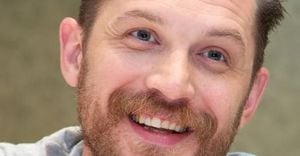Recent breakthroughs have shed new light on the evolutionary history of humans and their ancestors, highlighting the complex web of relationships among various hominids. The findings of modern paleoanthropology are not only reshaping our view of where we fit on the evolutionary tree but also sparking discussions about the ways different hominid species coexisted and possibly interacted.
One of the most intriguing developments is the recent discovery of fossil remains in Africa, which researchers claim could belong to previously unknown hominid species. According to Dr. Sarah Thompson, the lead paleontologist on the team, "These fossils are evidence of diverse forms of early human relatives living alongside each other, far more than we had previously considered. This could change the narrative we've held about human evolution."
Adding to the puzzle, researchers have unearthed remnants of what may have been tools used by these hominids. These discoveries provide insights not just on their daily living but also suggest capabilities for complex thought and social structures. Mark Johnson, who oversees outreach at the Natural History Museum, explained, "When we find tools, it's not just about the items themselves; it's about the behaviors they indicate, the intelligence behind their design, and the learning processes involved in their creation."
Meanwhile, genetic research continues to unravel the mysteries of human ancestry. A groundbreaking study published recently reveals significant gene flow between Neanderthals and early modern humans, painting a picture of interbreeding rather than mere competition or extinction. Scientists at Harvard University, led by Dr. Emily Rodriguez, stated, "Our findings demonstrate not only biological mixing but also cultural exchanges between these groups, indicating they likely shared territories and resources more extensively than we imagined."
These insights have led to lively debates within the scientific community, as experts increasingly explore the social dynamics of our ancient relatives. According to Dr. Armen Melikyan, who specializes in hominid behavior at Columbia University, "It’s fascinating to think about how mixed communities could have formed among different species, possibly influencing their survival strategies and cultural evolutions." This notion reframes our perception of prehistoric social structures, emphasizing the collaborative aspects rather than pure survival of the fittest.
Yet with progress also come challenges. New techniques such as ancient DNA sequencing and isotopic analysis are constantly being refined, causing some researchers to reassess established timelines of human evolution. For example, certain fossils previously dated to one period are now being reconsidered as coming from other epochs, leading to confusion about when certain human traits emerged. Dr. Helen Chang, conducting research at the Max Planck Institute, remarked, "We’re entering a golden age of discovery, where the sharpening of our tools brings both exhilarating revelations and frustrating uncertainties as we piece together this ancient puzzle."
The broader narrative of human evolution is not purely about the fossils we dig up but also the innovations happening within the field itself. Collaborative efforts across various disciplines, including archaeology, genetics, and even anthropology, are redefining the approach scientists take to studying our origins. This interconnectedness is highlighted by Dr. Anika Foster, who notes, "It’s no longer just about finding bones but about constructing stories. Each discovery adds another chapter to the tale of our past, and increasingly these chapters are being co-authored across scientific fields."
Public interest surrounds these discoveries is rising too. Museums worldwide are beginning to update their exhibits to reflect the latest findings, making the past more accessible to the general public. Educational programs, now infused with the latest research, aim to engage younger generations with the fascinating story of human evolution. According to museum curator Linda Yu, "We want our exhibits to tell the most accurate stories possible. Kids today are curious, and they want to know about human ancestry and where we come from. It's about igniting their imaginations."
This cultural shift is not without its controversies, as some religious groups challenge the scientific narratives on human origins. Tensions sometimes arise as educators strive to balance scientific findings with diverse belief systems. Nevertheless, many advocates argue for the importance of teaching evolution comprehensively. Dr. Robert Linfield, who has been active on the front lines of science education, insists, "Science is not just about data; it's about critically examining our world and ourselves. We must encourage open discussions around these convictions and the evidence so students are equipped to form their own ideas and beliefs."
All these developments come at time when humanity faces new challenges, from pandemics to climate change, leading some scientists to reflect on what our shared history means for our future. Dr. Rachel Peterson points out, "Understanding our evolutionary past can offer valuable lessons for collective survival. Just as our ancestors adapted and evolved, we too can learn to innovate and cooperate for the good of humanity." This perspective sheds light not only on our past but also on how we can potentially evolve as individuals and societies.
The interplay of ancient history with contemporary discovery reflects upon the dynamic field of paleoanthropology. With every fossil unearthed and every gene sequenced, the story of our ancestral lineage grows richer and more complex, encouraging us to question not only where we came from but also where we are headed. New data will continue to surface, challenging old narratives and inviting fresh inquiries, ensuring the narrative of human evolution remains vibrant and significant as it evolves,” said Dr. Thompson.
With the pace of new discoveries, it promises to be an exciting time for paleoanthropology. The stories of our distant relatives are not just about bones and tools; they speak to our humanity, our shared struggles, and the fundamental threads of connection among all people. Being part of this ever-evolving narrative is something all can appreciate, as it not only paints the picture of our past but also our potential futures.



